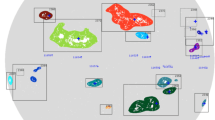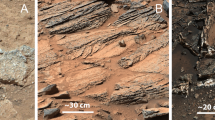Abstract
The different algorithms appropriate for point source photometry on data from the SPIRE instrument on-board the Herschel Space Observatory, within the Herschel Interactive Processing Environment (HIPE) are compared. Point source photometry of a large ensemble of standard calibration stars and dark sky observations is carried out using the 4 major methods within HIPE: SUSSEXtractor, DAOphot, the SPIRE Timeline Fitter and simple Aperture Photometry. Colour corrections and effective beam areas as a function of the assumed source spectral index are also included to produce a large number of photometric measurements per individual target, in each of the 3 SPIRE bands (250, 350, 500μm), to examine both the accuracy and repeatability of each of the 4 algorithms. It is concluded that for flux densities down to the level of 30mJy that the SPIRE Timeline Fitter is the method of choice. However, at least in the 250 and 350μm bands, all 4 methods provide photometric repeatability better than a few percent down to at approximately 100mJy. The DAOphot method appears in many cases to have a systematic offset of ∼8 % in all SPIRE bands which may be indicative of a sub-optimal aperture correction. In general, aperture photometry is the least reliable method, i.e. largest scatter between observations, especially in the longest wavelength band. At the faintest fluxes, <30mJy, SUSSEXtractor or DAOphot provide a better alternative to the Timeline Fitter.









Similar content being viewed by others
Notes
Interactive data Language: http://www.exelisvis.com/ProductsServices/IDL.aspx
References
Bendo, G., et al.: Flux calibration of the Herschel-SPIRE photometer. Mon. Notic. Roy. Astron. Soc. 433, 3062 (2013)
Bertin, E., Arnouts, S.: SExtractor: software for source extraction. Astron. Astrophys. Suppl. 117, 393 (1996)
Cohen, M., et al.: Stellar calibration in the infrared: extending the legacy of KAO, ISO, and MSX to SIRTF and beyond. ESASP 481, 135 (2003)
Decin, L., et al.: Stellar Models in IR Calibration. ESASP 481, 141 (2003)
Diolaiti, E., et al.: Analysis of isoplanatic high resolution stellar fields by the StarFinder code. Astron. Astrophys. Suppl. 147, 335 (2000)
Dowell, C., Pohlen, M., Pearson, C.P., et al.: Status of the SPIRE photometer data processing pipelines during the early phases of the Herschel mission. Proc. SPIE 7731, 773136 (2010)
Eales, S., et al.: The Herschel atlas. Publ. Astron. Soc. Pac. 122, 499 (2010)
Griffin, M., et al.: The Herschel-SPIRE instrument and its in-flight performance. Astron. Astrophys. 518, 3 (2010)
Griffin, M., et al.: Flux calibration of broadband far infrared and submillimetre photometric instruments: theory and application to Herschel-SPIRE. Mon. Notic. Roy. Astron. Soc. 434, 992 (2013)
Molinari, S., et al.: Clouds, filaments, and protostars: the Herschel Hi-GAL milky way. Astron. Astrophys. 518, 100 (2010)
Moreno, R.: Ph.D. Thesis, University of Paris (1998)
Moreno, R.: Technical report, neptune and uranus planetary brightness temperature tabulation. ESA Herschel science centre, available at: ftp://ftp.sciops.esa.int/pub/hsc-calibration/PlanetaryModels/ESA4/ (2012)
Nguyen, H.T., et al.: HerMES: the SPIRE confusion limit. Astron. Astrophys. 518, 5 (2010)
Oliver, S., et al.: The Herschel multi-tiered extragalactic survey: HerMES. Mon. Notic. Roy. Astron. Soc. 424, 1614 (2012)
Ott, S.: The Herschel data processing system HIPE and pipelines. ASP Conference Series 434, 139 (2010)
Pilbratt, G., et al.: Herschel space observatory. An ESA facility for far-infrared and submillimetre astronomy. Astron. Astrophys. 518, L1 (2010)
Savage, R., Oliver, S.J.: Bayesian methods of astronomical source extraction. Astrophys. J. 661, 1339 (2007)
Stetson, P.B.: DAOPHOT - a computer program for crowded-field stellar photometry. PASP 99, 191 (1987)
Acknowledgments
The authors would like to thank the referee for providing valuable comments that improved the results of this paper. SPIRE has been developed by a consortium of institutes led by Cardiff Univ. (UK) and including: Univ. Lethbridge (Canada); NAOC (China); CEA, LAM (France); IFSI, Univ. Padua (Italy); IAC (Spain); Stockholm Observatory (Sweden); Imperial College London, RAL, UCL-MSSL, UKATC, Univ. Sussex (UK); and Caltech, JPL, NHSC, Univ. Colorado (USA). This development has been supported by national funding agencies: CSA (Canada); NAOC (China); CEA, CNES, CNRS (France); ASI (Italy);MCINN (Spain); SNSB (Sweden); STFC, UKSA (UK); and NASA (USA). HIPE is a joint development by the Herschel Science Ground Segment Consortium, consisting of ESA, the NASA Herschel Science Center, and the HIFI, PACS and SPIRE consortia.
Author information
Authors and Affiliations
Corresponding author
Additional information
Herschel is an ESA space observatory with science instruments provided by European-led Principal Investigator consortia and with important participation from NASA.
Rights and permissions
About this article
Cite this article
Pearson, C., Lim, T., North, C. et al. SPIRE point source photometry: within the Herschel interactive processing environment (HIPE). Exp Astron 37, 175–194 (2014). https://doi.org/10.1007/s10686-013-9351-4
Received:
Accepted:
Published:
Issue Date:
DOI: https://doi.org/10.1007/s10686-013-9351-4




